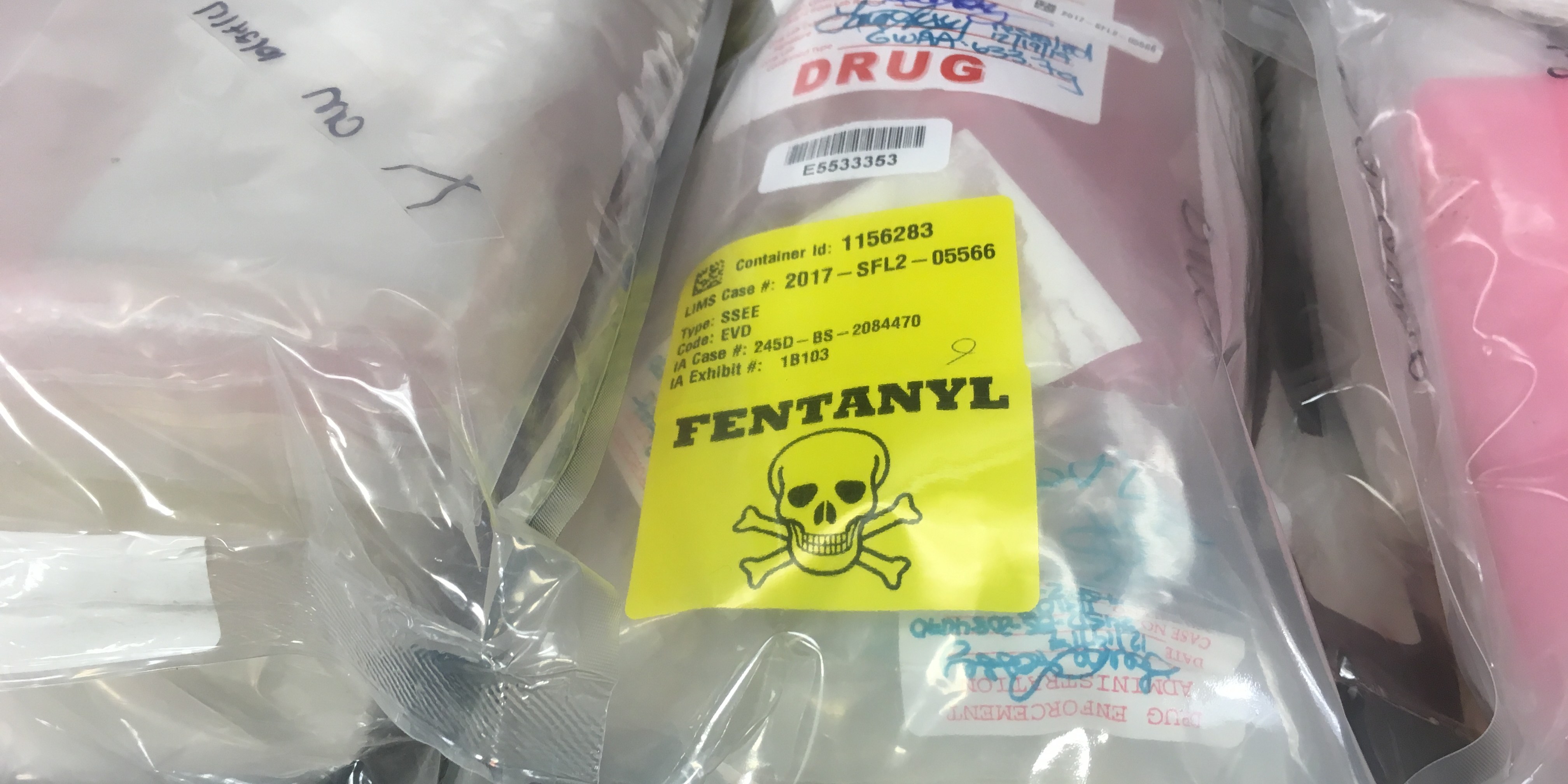
20 Dec Fentanyl Now Officially Causes the Most Drug Overdose Deaths in the U.S.
Fentanyl is a potent synthetic opioid drug that’s often implicated in drug overdose deaths. And, according to a recent report from the Centers for Disease Control and Prevention (CDC), it now tops the charts: In 2016, fentanyl was involved in 28.8 percent of all drug overdose deaths, compared to just 4 percent in 2011.
For the CDC report, published last week, researchers looked at mortality data for 2011 through 2016 from the National Vital Statistics System.
That data was then matched up with the text from actual death certificates to determine a specific cause of death in each case and get some contextual information to determine which drugs were involved.
Their results showed that, although the drugs most commonly involved with these deaths largely stayed the same, they traded places over time as the mechanisms of the opioid crisis shifted and fentanyl became more of an issue.
For instance, oxycodone, cocaine, and heroin were responsible for the most overdose deaths in 2011 (involved in 13.5, 12.3, and 11 percent of deaths, respectively). And in that year, fentanyl was the 10th most frequently cited drug and only mentioned in 4 percent of deaths. Then, from 2012 through 2015, heroin was most commonly responsible for drug overdose deaths, gradually becoming associated with a larger and larger percentage of those deaths (increasing from 14.8 percent in 2012 to 25.4 percent in 2015). Finally, in 2016, the most recent year for which data is available, fentanyl was implicated in 28.8 percent of deaths, followed by heroin (25.1), and cocaine (17.8).
These results make sense when compared to another recent CDC report, which found that drug overdose deaths have increased rapidly in the U.S. between 1999 and 2017. And the rate of overdose deaths involving synthetic opioids other than methadone, which includes fentanyl and similar potent opioids, increased 45 percent just between 2016 and 2017 (from 6.2 per 100,000 overdose deaths to 9).
Fentanyl does have important uses in medical settings, SELF explained previously. But when it’s used unintentionally and illicitly, the consequences can be deadly.
Because fentanyl is so much more potent than heroin, it can produce the same effects at smaller amounts. So, if a drug user unintentionally uses heroin that’s been cut with fentanyl, they’re likely to experience stronger effects than they expected. At the extreme end, that also means they’ll experience an overdose with a smaller dose than they would need with heroin.
But it’s important to remember that, in many opioid overdose deaths in this report and elsewhere, more than one drug is involved. In addition to opioids and stimulants (like cocaine), several of the most common drugs involved in deaths during these years were actually benzodiazepines (such as alprazolam, diazepam, and clonazepam), which are commonly prescribed to manage anxiety. The two types of drugs produce some similar effects—sedation and slowed breathing—and their effects may be increased when combined, SELF explained previously.
Although it may be tempting to demonize a single drug, the truth is more complicated—and it highlights the fact that the first steps in reducing the overdose death rates in the U.S. will likely require action at multiple levels.
“Fentanyl has indeed become the leading cause of overdose deaths in the U.S., but health-based measures are far more effective than criminalization,” Grant Smith, deputy director for national affairs at the Drug Policy Alliance, said in a recent press release. Specifically, that includes on-the-ground harm reduction measures, such as naloxone (which can reverse opioid overdoses) and fentanyl test strips, as well as basic education for people taking these drugs in both prescription and illicit contexts.
From there, some experts believe that preventing overdose deaths and other harms associated with opioid use also requires larger actions, such as establishing supervised consumption sites in key areas, making sure everyone has access to medication-assisted treatment for opioid use disorders, and reducing the stigma associated with drug use so that people feel comfortable seeking treatment when needed.
What’s clear is that we absolutely can’t wait any longer to do something.
Related:
[ad_2]
Source link



No Comments